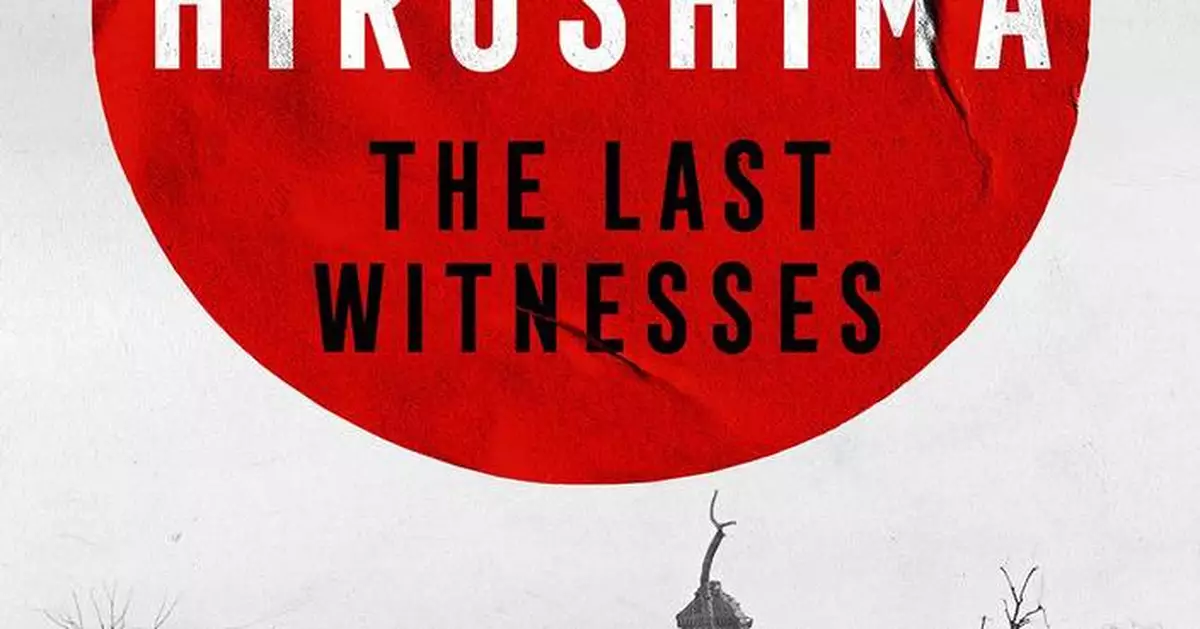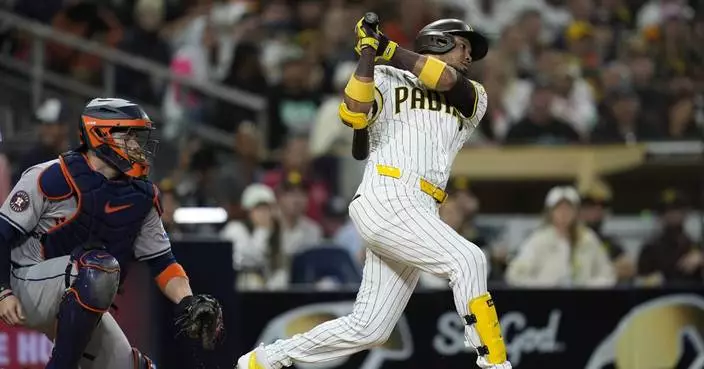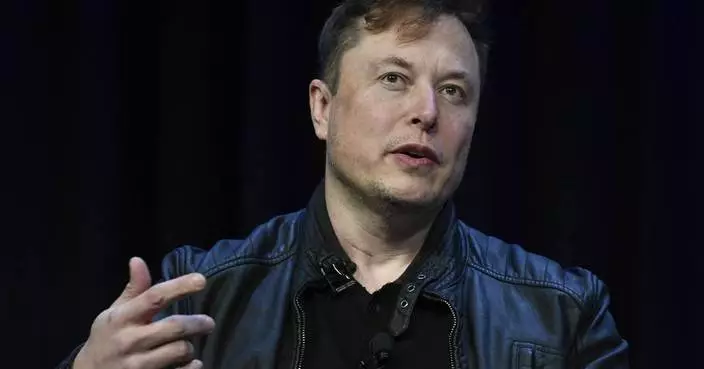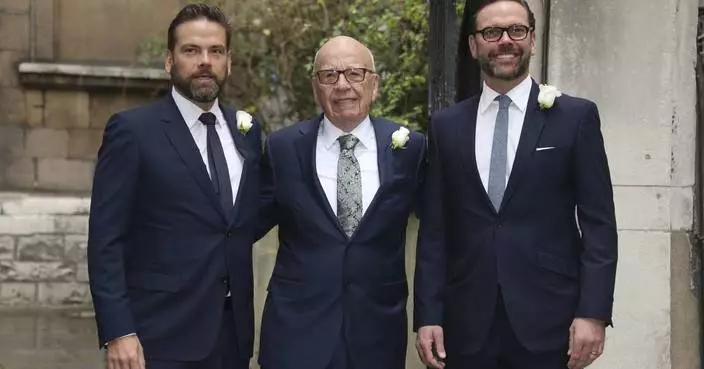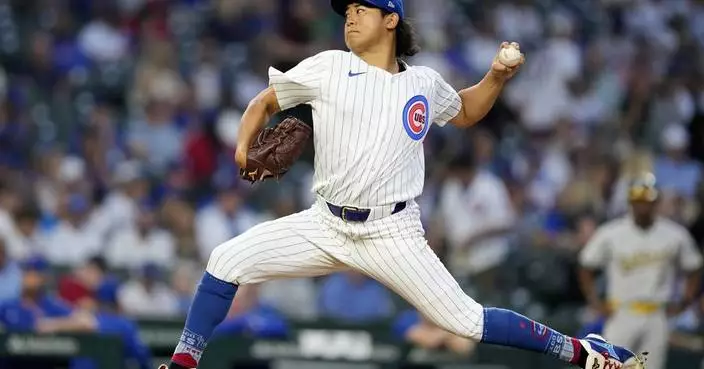An atomic bombing is so horrific all accounts tend to be quintessential. M.G. Sheftall’s “Hiroshima: The Last Witnesses,” a carefully and respectfully researched oral history, is no different.
Although the individuals who recount their tales vary, from engineers to schoolgirls, their message is the same: In the words of one survivor, Kohei Oiwa, “If there is a hell, he thought to himself, certainly it must be just like this.”
Oiwa, a junior high school student in 1945, is told to help stack bodies. Charred flesh crumpled in his grip so he held only bones. His is one of many rendered by Sheftall in his blow-by-blow retelling.
The storytelling leads up to Aug. 6, 1945, circles around and around that moment, then describes what it left afterward, weaving in and out of witness accounts.
The experience is tantamount to recalling a giant nightmare so painful it’s hard to read in one sitting.
Sheftall, an American who has lived in Japan since 1987, interviewed dozens of survivors, known as “hibakusha,” primarily in Japan but also in Taiwan and Korea. Of his book’s 545 pages, more than 50 pages are taken up by references and notes.
“I would describe not only the bombings themselves — something countless authors have done quite effectively before me — but also the world those survived had known before the bombs, and the New Japan they helped to rebuild from the rubble and ashes of the old,” he wrote in the acknowledgments.
It’s that story heard, over and over again, from those who lived to tell it, although many more died, tens of thousands, in a flash.
Oiwa, who was 2.1 kilometers (1.3 miles) from Japan's Ground Zero, was in his futon bed “when everything suddenly turned white.”
For a reporter assigned to Japan, with her fair share of hibakusha interviews, parts of the book meant to explain the cultural backdrops seemed a bit lengthy and painstakingly detailed.
But this reporter was also reminded of how the story of Hiroshima is at risk of being forgotten. The hibakusha are now over 90 in age.
Sheftall devotes a whole chapter on debunking the idea of being “vaporized.” The heat and destruction from Little Boy and Fat Man did not make for “waving a magic wand over people, and then, presto change-o, watching them disappear with a nice, clean painless ‘poof,’” he wrote.
Some people’s faces were literally gone. Others had eyeballs knocked out, dangling from their sockets. Charred black figures wandered through a flattened city, begging for water, “Mizu … mizu,” the title of one of the book’s chapters.
Illnesses from radiation poisoning followed for years. They felt guilt and shame for not having died.
His book tells their stories, in all their ruthless violence and gory pathos, but, most important, as a cautionary tale about the perils of nuclear warfare.
Yuri Kageyama is on X: https://x.com/yurikageyama
AP book reviews: https://apnews.com/hub/book-reviews
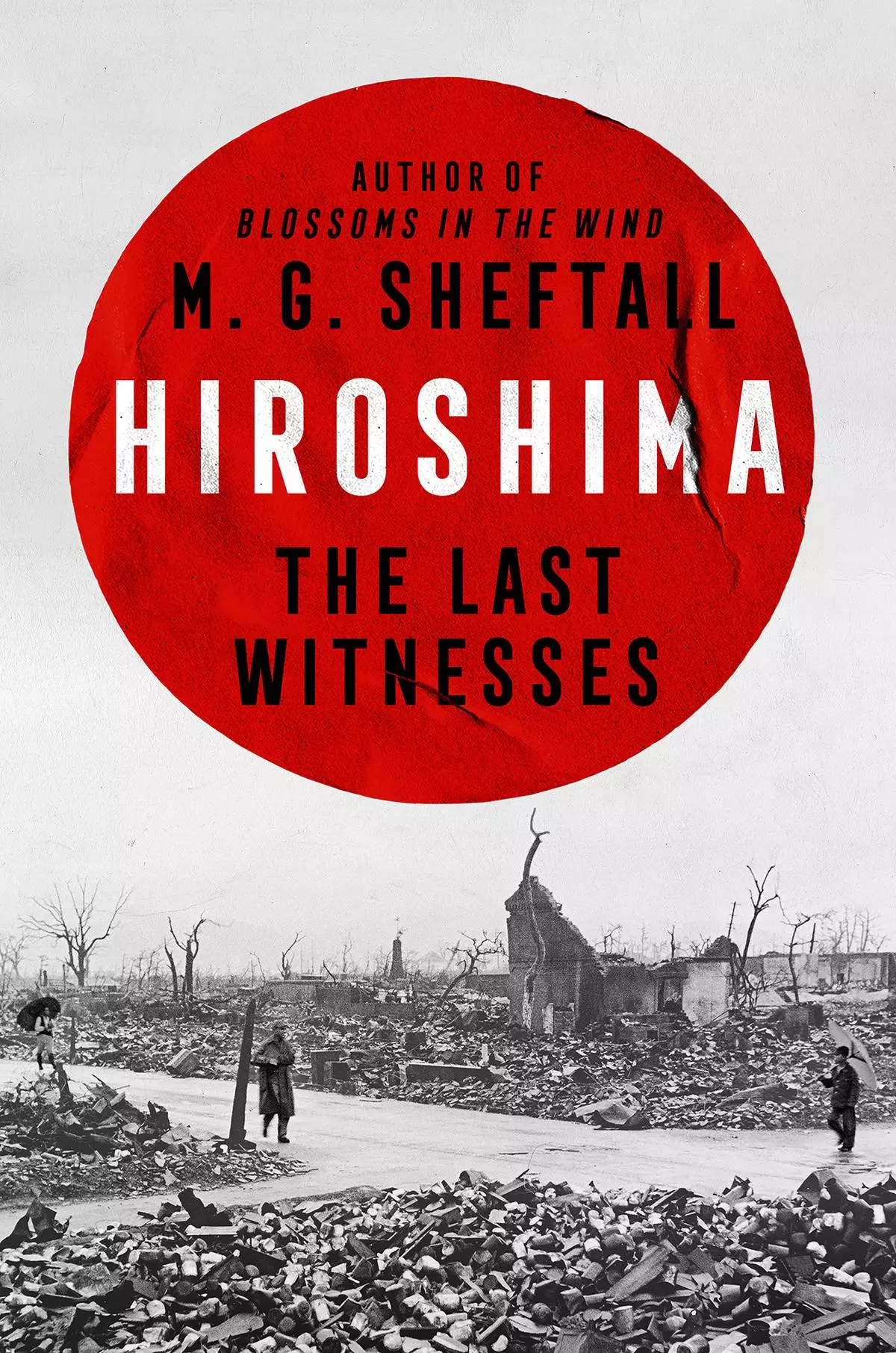
This cover image released by Dutton shows "Hiroshima: The Last Witnesses" by M.G. Sheftall. (Dutton via AP)
Shares were mixed in Asia on Tuesday after the Dow Jones Industrial Average set a record as Wall Street geared up for Federal Reserve’s most anticipated meeting in years.
Tokyo’s Nikkei index fell 2% to 35,828.54 and the Hang Seng in Hong Kong advanced 1.4% to 17,661.70.
Markets in mainland China and South Korea were closed.
Australia's S&P/ASX 200 gained 0.3% to 8,143.00.
Traders are eagerly awaiting the Fed's decision Wednesday on interest rates, which it is expected to cut for the first time in more than four years. The U.S. central bank has been keeping rates high to tamp down inflation and the main question is how much relief for the economy the Fed will deliver.
“The warning is that markets steeped in rich policy expectations are ripe for volatility,” Mizuho Bank said in a commentary. “Accordingly, it may be best to be braced for (policy) curveballs that could potentially force market re-pricing.”
On Monday, the Dow rose 228 points, or 0.6%, to surpass its prior all-time high set a few weeks ago. It closed at 41,622.08.
The S&P 500 index, which is much more comprehensive and widely followed on Wall Street, ticked up by 0.1% to climb within 0.6% of its own record set in July, ending at 5,633.09.
The Nasdaq composite slipped 0.5% to 17,592.13 as big technology stocks and other market superstars gave back a bit of their big gains from recent years.
Most stocks rose, and Oracle’s 5.1% gain helped lead the market. The software company continued a strong run that began last week with a better-than-expected profit report.
Alcoa jumped 6.1% after saying it would sell its ownership stake in a Saudi Arabian joint venture to Saudi Arabian Mining Co. for $950 million in stock and $150 million in cash. But drops for some influential Big Tech stocks kept indexes in check. Apple fell 2.8% and Nvidia lost 1.9%. They’re among the market’s most influential stocks because they’re among the largest by market value.
Carl Icahn’s Icahn Enterprises rose 14.5% after it said a U.S. judge dismissed a proposed class-action lawsuit against the company, one based on allegations by a research firm that looks for financial irregularities at companies and tries to profit when the stock prices fall.
Fertilizer producer Mosaic fell 3.6% after it said electrical equipment failures at mines and Hurricane Francine will reduce its production of potash and phosphate in the current quarter.
Traders are shifting bets toward a larger-than-usual rate cut by the Fed of half a percentage point, according to data from CME Group. The difference between a half-point cut and a quarter may sound academic, but it can have far-ranging effects. Lower rates relieve pressure on the economy, but it can also fuel inflation.
Inflation has eased substantially from its peak two summers ago, and the Fed has said it can now focus on supporting the slowing job market and economy. Some critics say it may be moving too late, increasing the risk of a possible recession.
In other dealings, the dollar fell to 140.56 Japanese yen from 140.61 yen. The yen has risen with expectations that the Bank of Japan will persist in raising rates after keeping them near zero for years, although it is expected to stand pat at its policy meeting this week.
“The Bank of Japan’s upcoming policy meeting is expected to reaffirm its commitment to gradual rate hikes, which could further bolster the yen soon,” Luca Santos, currency analyst at ACY Securities, said in a commentary.
The euro slipped to $1.1127 from $1.1135.
U.S. benchmark crude oil rose 49 cents to $70.58 a barrel. Brent crude, the international standard, picked up 32 cents to $73.07 a barrel.
AP Business Writer Stan Choe contributed.
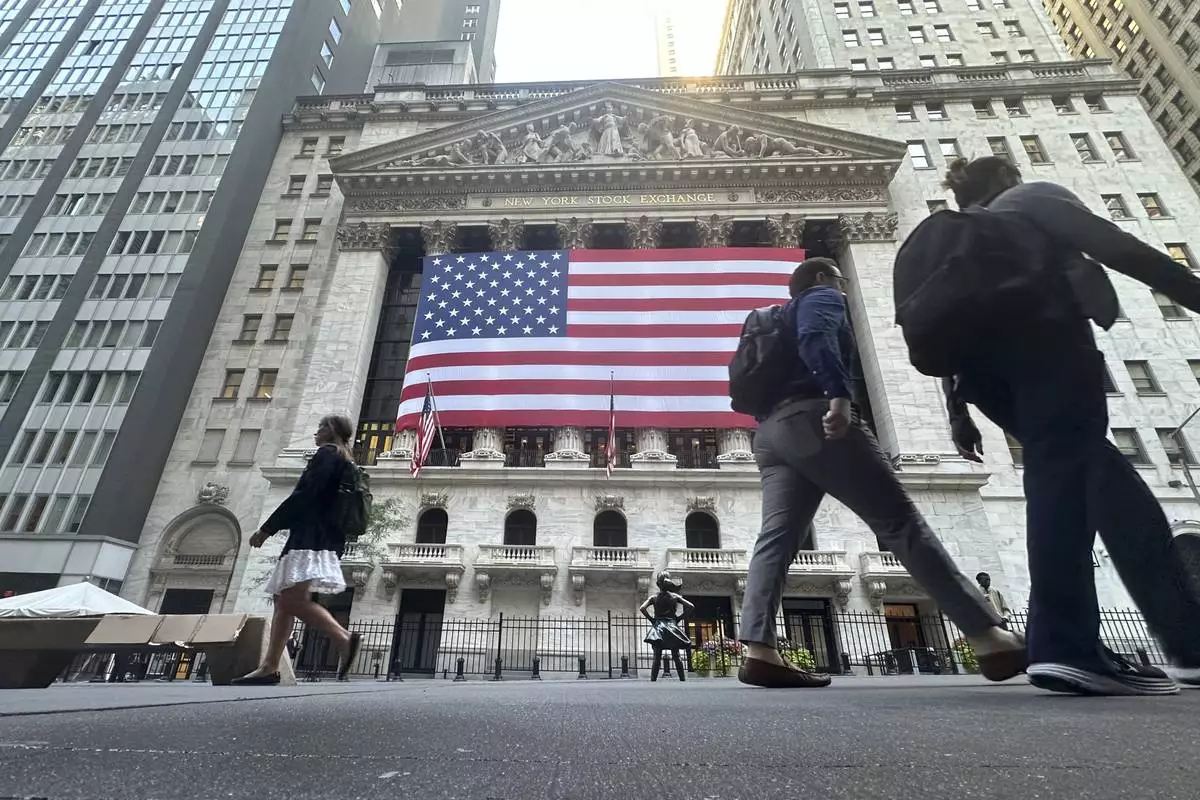
FILE - The American flag hangs from the front of the New York Stock Exchange on Sept. 10, 2024, in New York. (AP Photo/Peter Morgan, File)
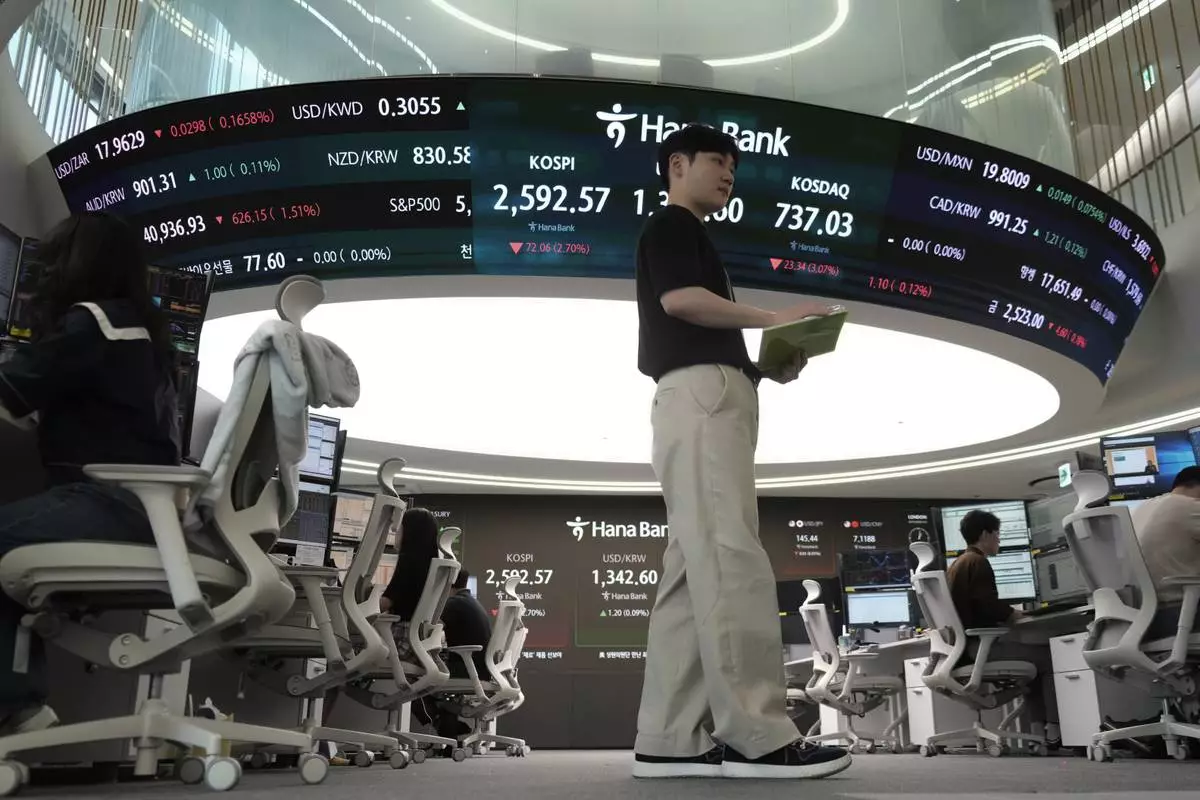
FILE - A currency trader passes by a screen showing the Korea Composite Stock Price Index (KOSPI), top center left, at the foreign exchange dealing room of the KEB Hana Bank headquarters in Seoul, South Korea, on Sept. 4, 2024. (AP Photo/Ahn Young-joon, File)
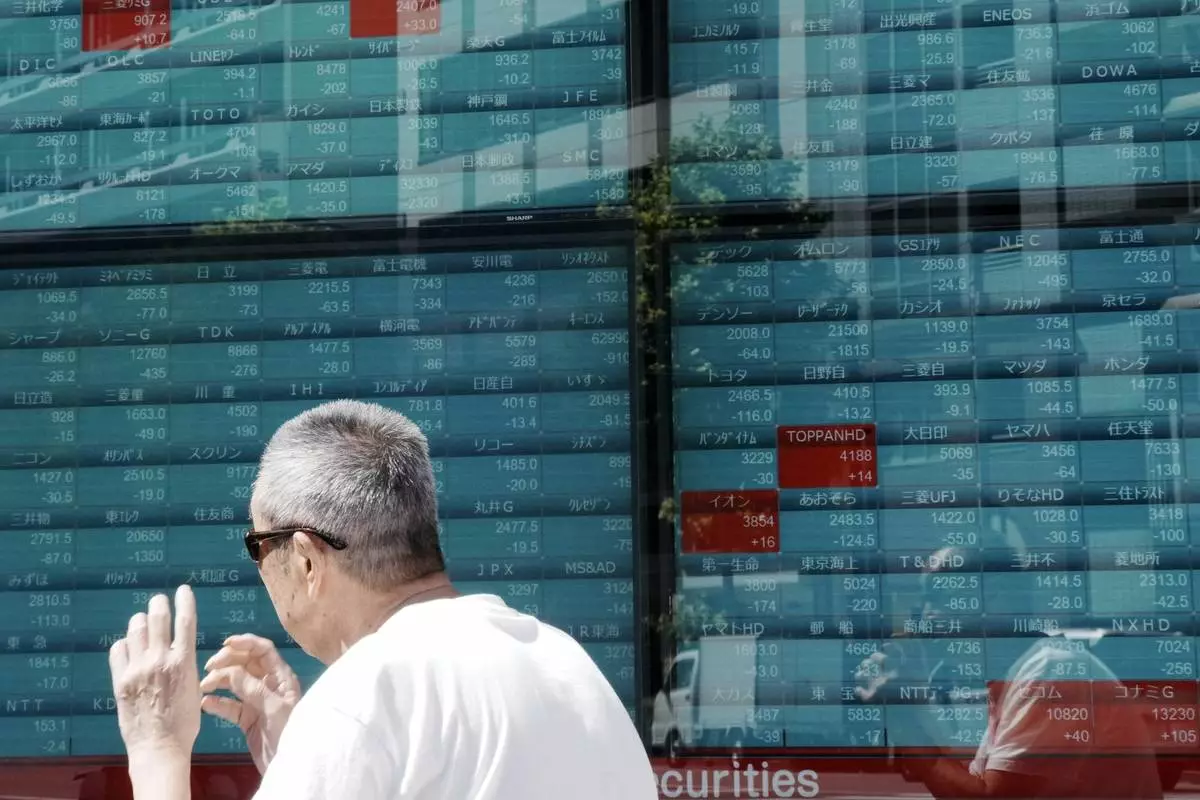
FILE - A person looks at an electronic stock board showing Japan's Nikkei index at a securities firm in Tokyo, on Sept. 9, 2024. (AP Photo/Eugene Hoshiko, File)



